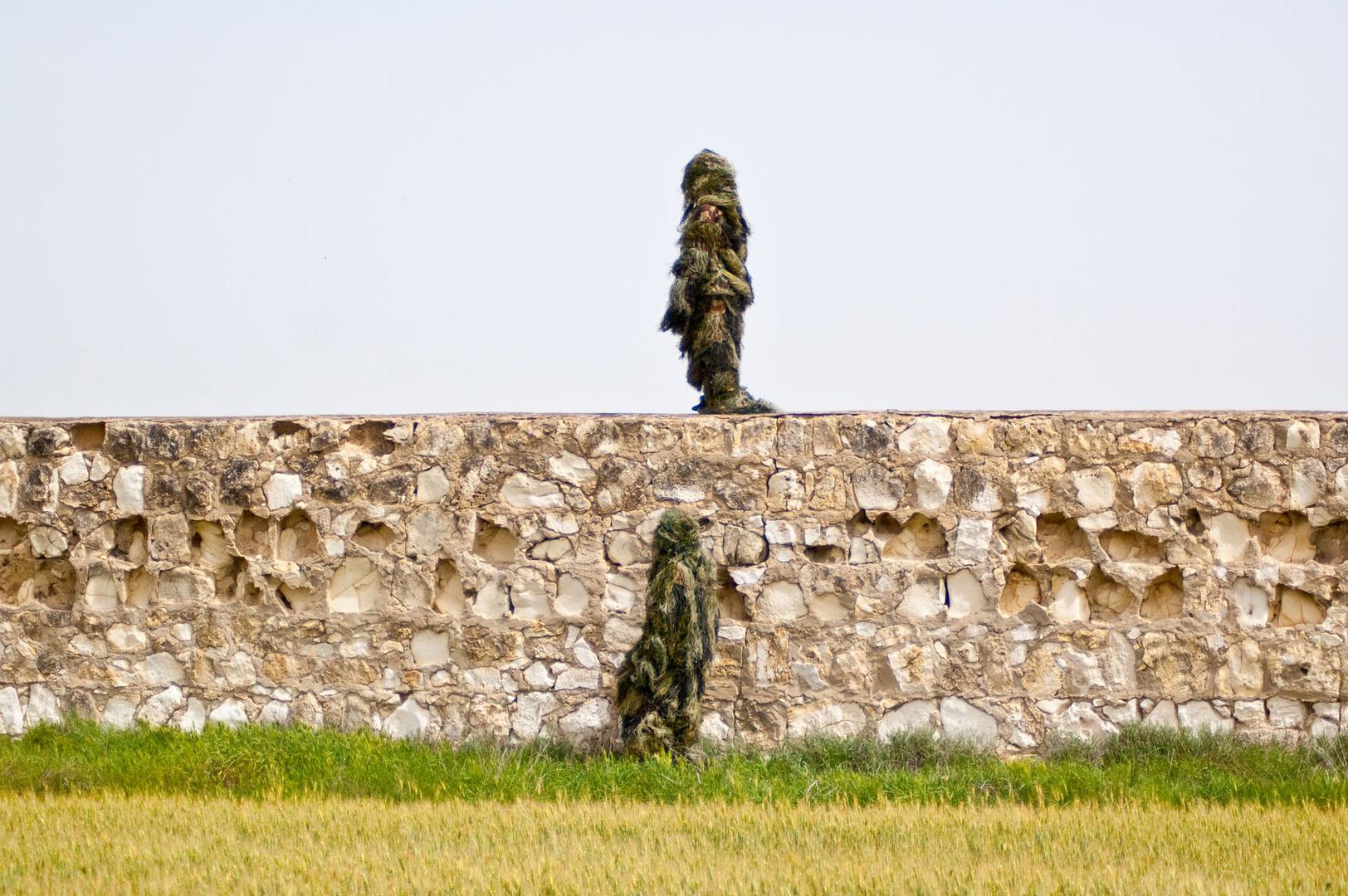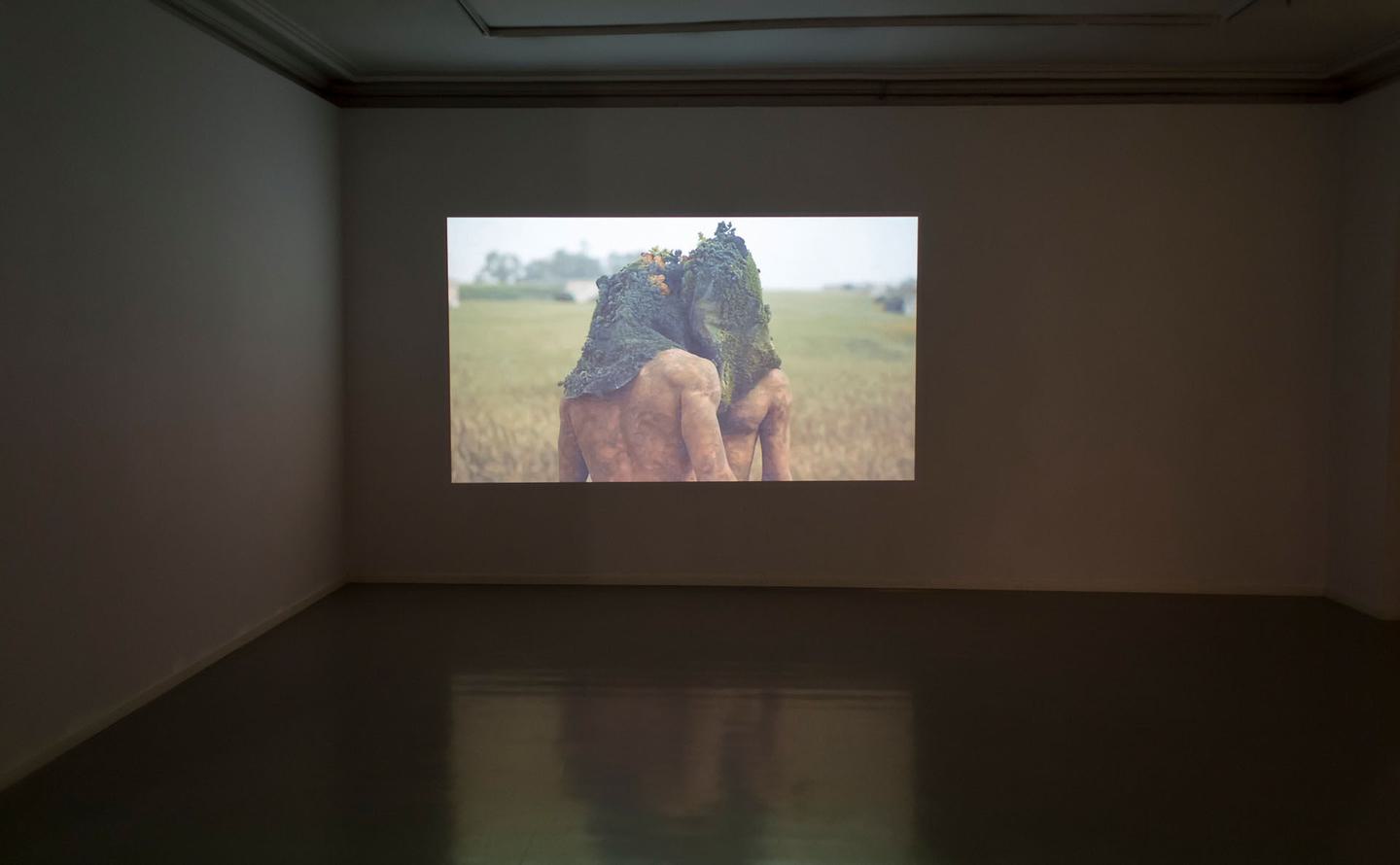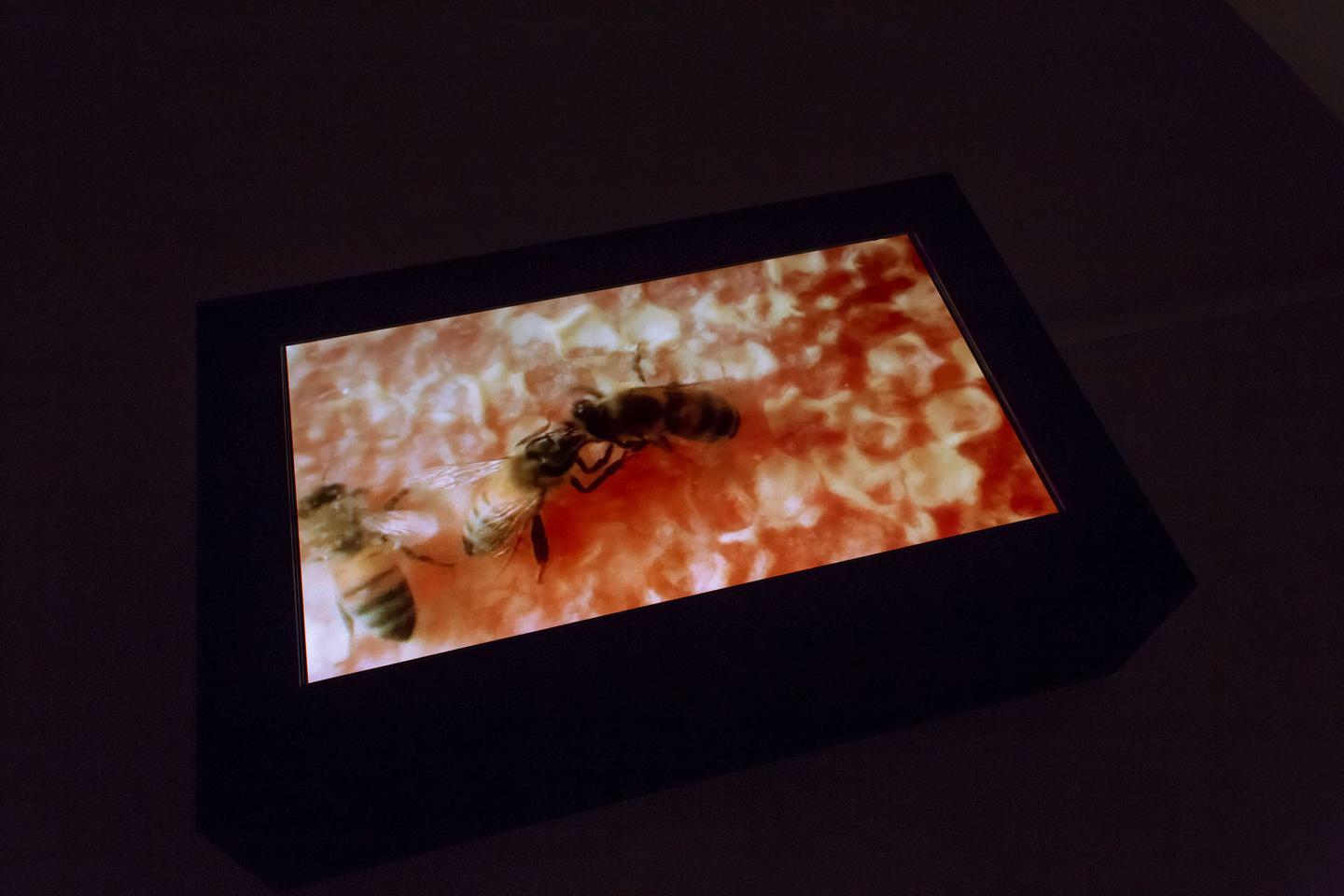Dafna Shalom
Fearful Days

Dafna Shalom, Fearful Days, 2012
Dafna Shalom’s video trilogy Fearful Days (2006-2010) exist in the interstice between religious and secular practice, tradition and modernity, spirituality and aggression. Through minimalistic visual gestures, Shalom examines a physical fragility tied to ritual, the politics of identity and learned and inherited ideas. The trilogy is part of a series of video works that focus on time-specificity in relation to site-specificity. With the integration of vocals and visuals, each video in the trilogy is accompanied by a traditional psalm marking the transition between the old and the New Year.
Scene one: A man and a woman apply camouflage colors to their faces, scene two; bees’ work carefully on a honeycomb. Scene three; two men perform a ritual war dance in a wheat field with low stone walls spread out over the field. The scenes are accompanied by traditional psalms sung during the annual ceremonies of the Days of Awe. The songs, here taken out of their religious context, offer an alternative narrative. They are Middle Eastern and go back to the Jewish tradition of the Levant and the Maghreb.
The exhibition at Oslo Kunstforening/Oslo Fine Art Society with Dafna Shalom includes the video trilogy Fearful Days and a photographic series depicting details of the human body covered in war paint. While the photographs resemble abstract paintings, the combat suits used in the ritual war dance look more like landscapes and the human bodies take on the shape of animals. Nothing is what it looks like.
The first video was made in 2006 during the Second Lebanon War, known in Lebanon as the July War. A prayer, structured as a call and reply were the woman call and the men reply, accompanies the act of painting, giving the martial act a different tone. In the second video a similar prayer in Hebrew Moroccan style accompanies the geometric environment with the bees’ precise movements. The field in the third video is located in the southern part of Israel close to the Gaza border. The British constructed the sixty systematically placed walls for battle during WWII.

Dafna Shalom, Fearful Days, 2012
In the trilogy Shalom uses camouflage colors, uniforms and martial arts choreography. Military camouflage developed during the 19th century due to the increasing range and accuracy of firearms. During WWI camouflage techniques developed even more, often with artists behind the pattern designs. Today the military operate with four different patterns; desert, jungle, snow and woodlands. Dafna Shalom worked with original camouflage color pallets, ghillie combat suits, and head masks designed by the artist.
The title Fearful Days (Yamim Noraim in Hebrew) refers to the first ten days after Rosh Hashanah (Jewish New Year) that end with Yom Kippur (Day of Atonement). These days, also known as the Days of Awe or Days of Repentance, are devoted to serious introspection. This is the time when you should consider your wrongdoings of the past year and repent. In the Ashkenazi (European) tradition the Days of Awe are ten, while in the Sephardic (Spanish/Mediterranean) tradition the ceremonies go on for a month.
The exhibition period at Oslo Kunstforening/Oslo Fine Art Society correspond to the month of mercy Elul in the Jewish calendar. During Elul sorrows, pains, forgiveness and love are shared collectively. In the transition from traditional to secular society the collectiveness embedded in the “old” rituals got lost creating a gap attracting “new” collective notions such as nationalism, commercialism and fundamentalism. The trilogy Fearful Days questions spiritual and secular aspects within contemporary society.
The trilogy was shown at the Petach Tikva Museum in Israel in 2011. A catalogue, with essays by Drorit Gur-Arie and Simon Njami, co-produced by the Petach Tikva Museum and Oslo Kunstforening/Oslo Fine Art Society will be available during the exhibition.
In 2010 the artist Dafna Shalom participated in the group exhibition Stop Making Sense. Nine artists that all live and work in Israel and who have different geographical backgrounds (Europe, Maghreb and Ottoman Palestine) presented works in the show. Oslo Kunstforening/Oslo Fine Art Society has invited Dafna Shalom back to Oslo to show the whole trilogy of Fearful Days. Almost all the artists in Stop Making Sense showed their work for the first time in Norway. By inviting back one of the artists for a solo presentation the dialogue continues.
Fearful Days: A Trilogy was curated by Marianne Hultman, Director, Oslo Kunstforening/Oslo Fine Art Society.
The exhibition was made possible through the kind support of the Foundation Fritt Ord, Stiftelsen Morgenstjernen and Norske Kunstforeninger in Norway.

Bio
Dafna Shalom studied at the International Center for Photography in New York, and graduated from Hunter College with a degree in fine arts. In 1997 She assisted on various contemporary art projects for the Public Art Fund and the multimedia artist Oliver Herring. She exhibited her work at The Minnesota Center for Photography, USA; Haifa Museum, Israel; Petach Tikva Museum, Israel; Hudson Valley Center for Contemporary Art, Peekskill, USA; Camera Obscura, Tel Aviv; The Jewish museum, New York; CCCB Barcelona; Tallinn Art Hall, Estonia; 50 Gallery, Dusseldorf; the Suzanne Dellal Performing Art Center, Tel Aviv and more.